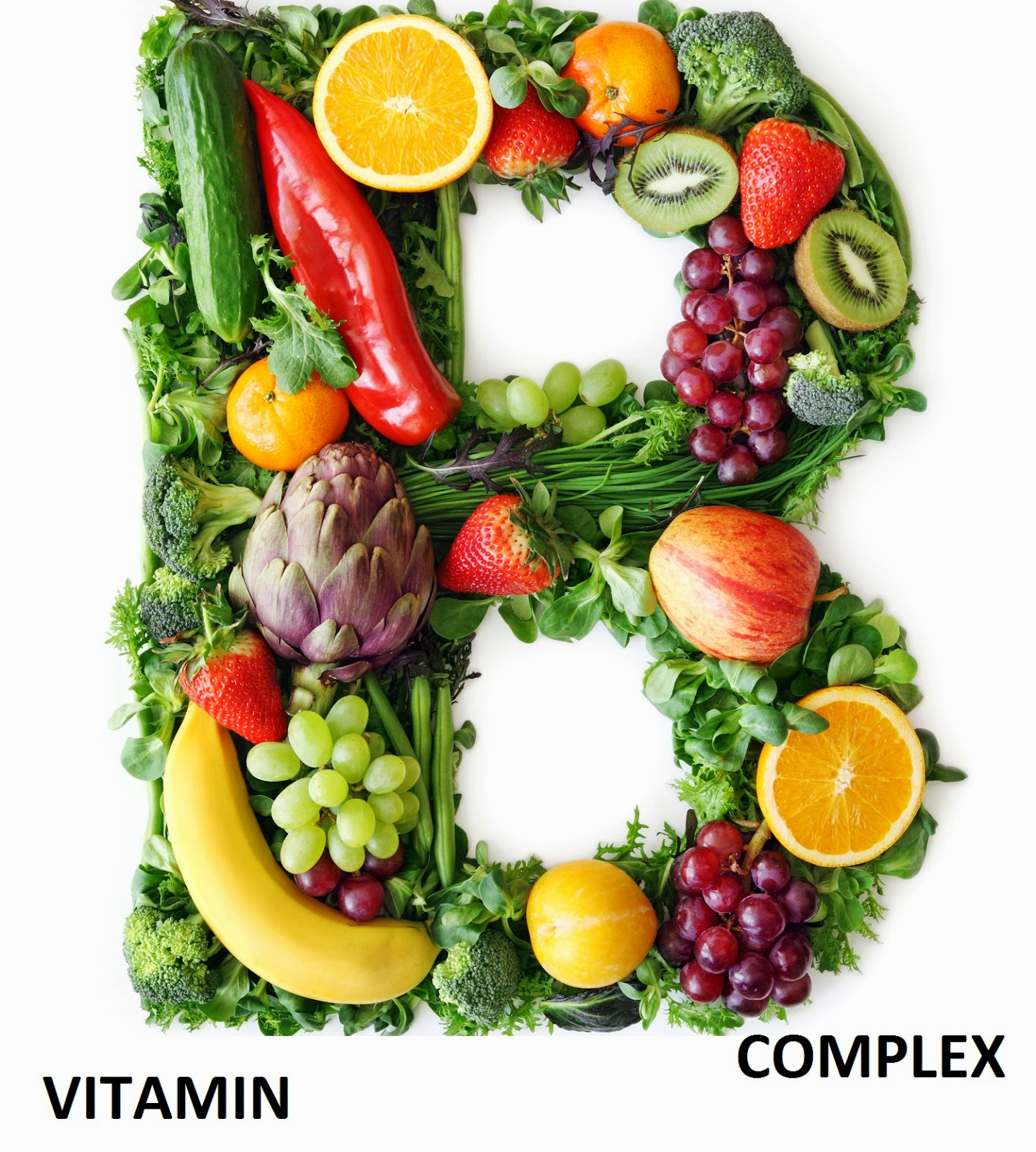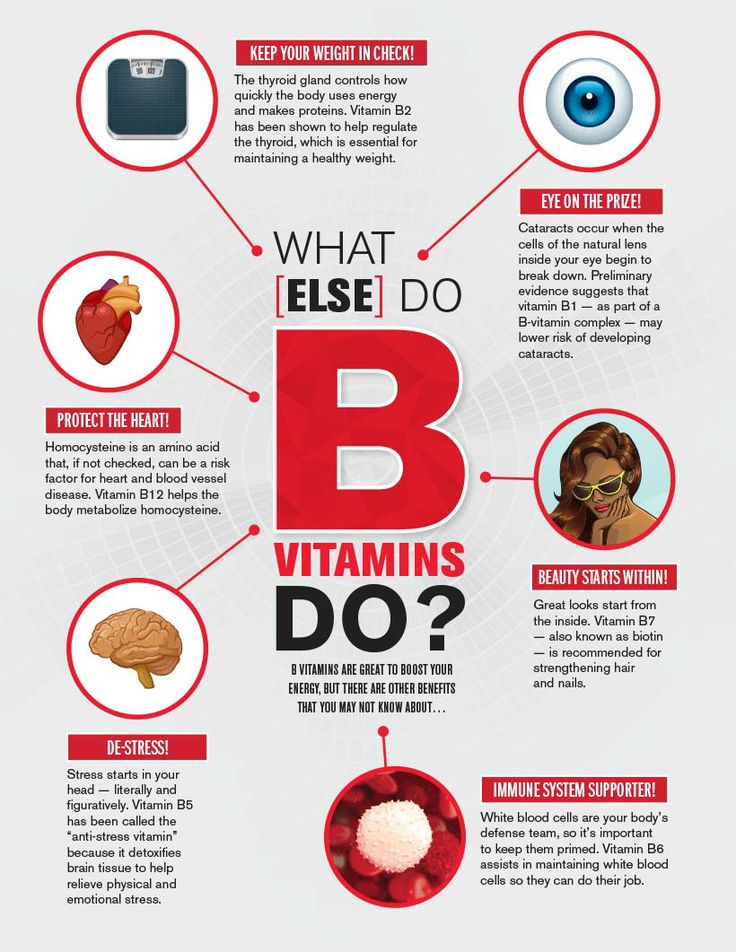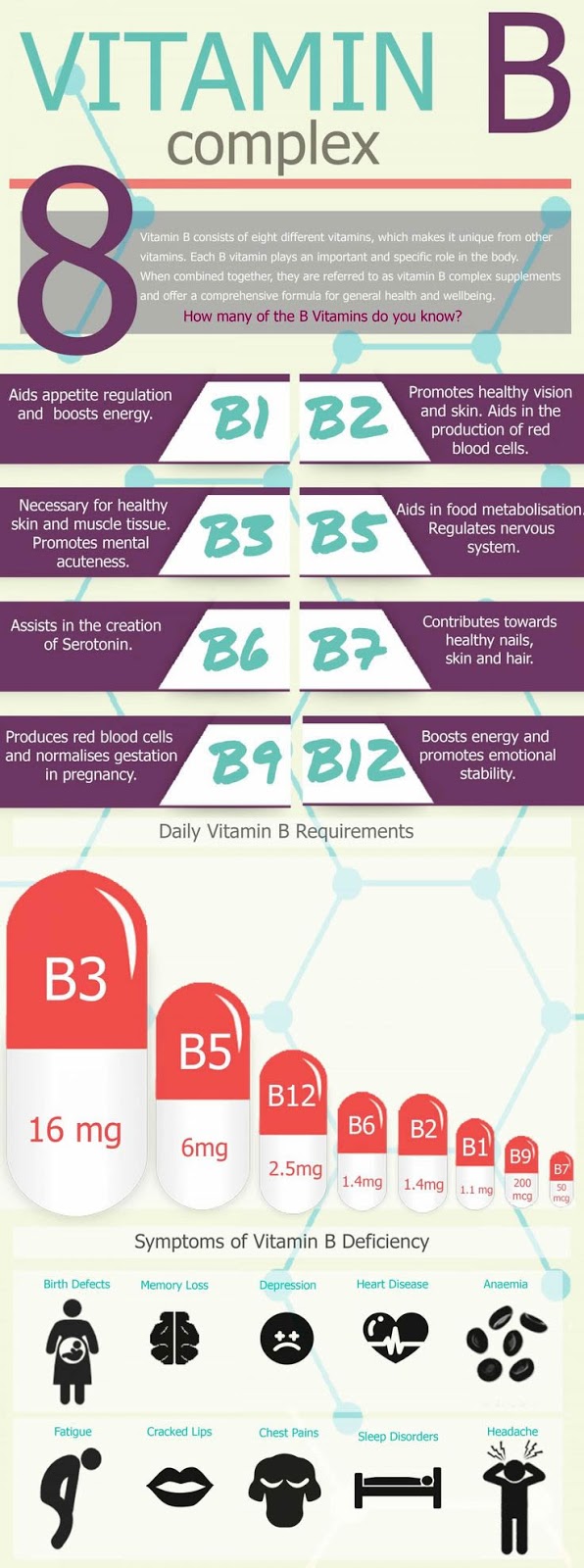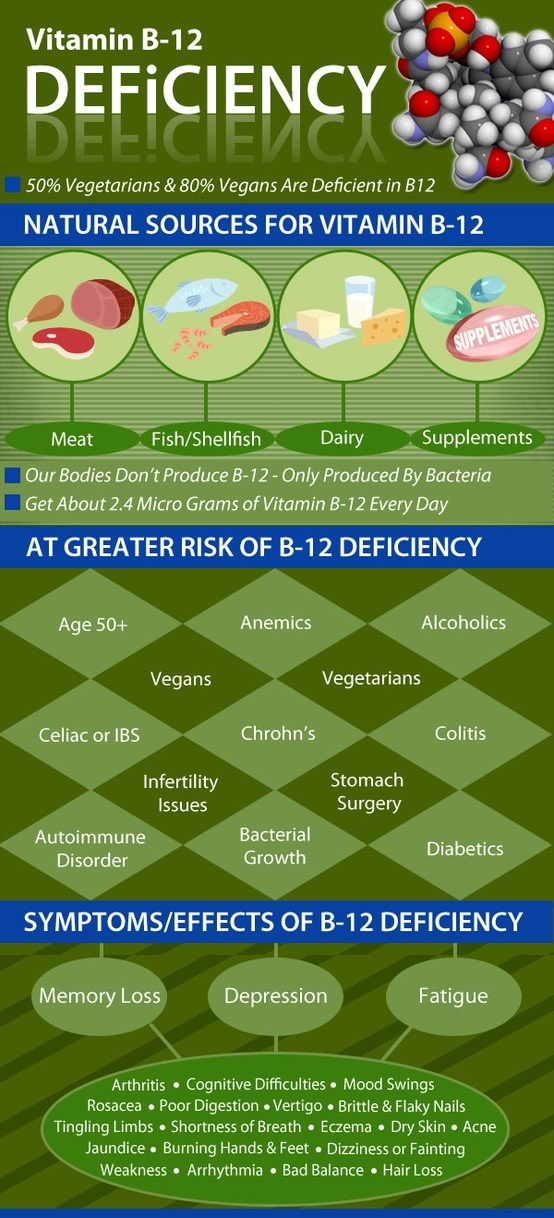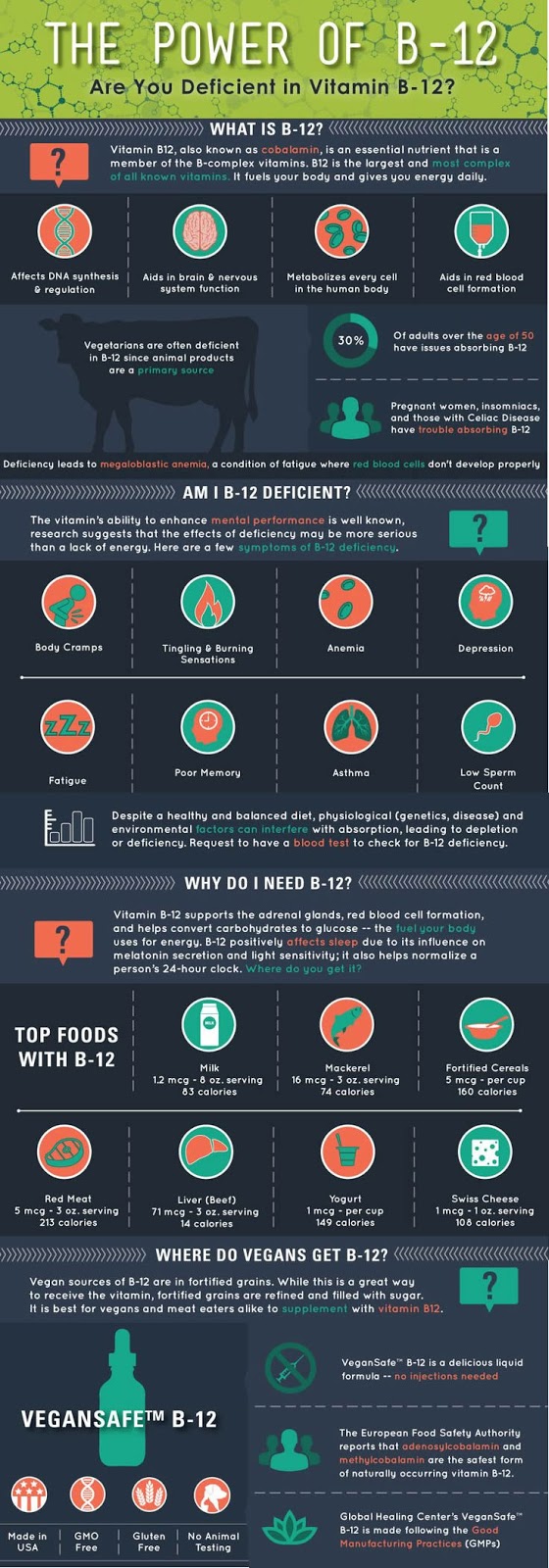Vitamin C
 |
| Vitamin C |
That which the body cannot absorb is excreted in the urine. The body stores a small amount, but daily intake, preferably in dietary form, is recommended for optimum health.
Certain health conditions may cause vitamin C depletion, including diabetes and high blood pressure. People who smoke and women who take estrogen may also have lower vitamin C levels. In addition, men are more likely to be vitamin C depleted, as are the elderly. High stress levels have also been linked to vitamin C deficiency.
In addition, certain medical and surgical procedures may lower the levels of vitamin C in the body. It has been found that hemodialysis causes patients with kidney disease to lose as much as 66 mg per session. Similarly, patients who have had kidney transplants are at increased risk of vitamin C deficiency.
  |
Severe vitamin C deficiency leads to scurvy, a disease common on ships prior to the eighteenth century, due to the lack of fresh fruits and other dietary vitamin C sources. Symptoms of scurvy include weakness, bleeding, tooth loss, bleeding gums, bruising, and joint pain.
Less serious vitamin C depletion can have more subtle effects such as weight loss, fatigue, weakened immune system (as demonstrated by repeated infections and colds), bruises that occur with minor syok and are slow to heal, and slow healing of other wounds.
Low vitamin C levels have also been associated with high blood pressure, increased heart attack risk, increased risk for developing cataracts, and a higher risk for certain types of cancer (i.e., prostate, stomach, colon, oral, and lung).
General use
Vitamin C is a critical component of both disease prevention and of basic body building processes. The therapeutic effects of vitamin C include:
- Allergy and asthma relief. Vitamin C is present in the lung’s airway surfaces, and insufficient vitamin C levels have been associated with bronchial constriction and reduced lung function. Some studies have associated vitamin C supplementation with asthmatic symptom relief, but results have been inconclusive and further studies are needed.
- Cancer prevention. Vitamin C is a known antioxidant and has been associated with reduced risk of stomach, lung, colon, oral, and prostate cancer.
- Cataract prevention. Long-term studies on vitamin C supplementation and cataract development have shown that supplementation significantly reduces the risk of cataracts, particularly among women. One study published in 2002 found that adequate vitamin C intake in women under 60 years of age reduced their risk of developing cataracts by 57%.
- Collagen production. Vitamin C assists the body in the manufacture of collagen, a protein that binds cells together and is the building block of connective tissues throughout the body. Collagen is critical to the formation and ongoing health of the skin, cartilage, ligaments, corneas, and other bodily tissues and structures. Vitamin C is also thought to promote faster healing of wounds and injuries because of its role in collagen production.
- Diabetes control. Vitamin C supplementation may assist diabetics in controlling blood sugar levels and improving metabolism.
- Gallbladder disease prevention. A study of over 13,000 subjects published in the Archives in Internal Medicine found that women who took daily vitamin C supplements were 34% less likely to contract gallbladder disease and gallstones, and that women deficient in ascorbic acid had an increased prevalence of gallbladder disease.
- Immune system booster. Vitamin C increases white blood cell production and is important to immune system balance. Studies have related low vitamin C levels to increased risk for infection. Vitamin C is frequently prescribed for HIV-positive individuals to protect their immune system.
- Neurotransmitter and hormone building. Vitamin C is critical to the conversion of certain substances into neurotransmitters, brain chemicals that facilitate the transmission of nerve impulses across a synapse (the space between neurons, or nerve cells).
Such neurotransmitters as serotonin, dopamine, and norepinephrine are responsible for the proper functioning of the central nervous system, and a deficiency of neurotransmitters can result in psychiatric illness. Vitamin C also helps the body manufacture adrenal hormones.
Other benefits of vitamin C are less clear cut and have been called into question with conflicting study results. These include vitamin C’s role in treating the common cold, preventing heart disease, and treating cancer.
Respiratory health
Doses of vitamin C may reduce the duration and severity of cold symptoms, particularly in people who are vitamin C deficient.
The effectiveness of vitamin C therapy on colds seems to be related to the person’s dietary vitamin C intake and their general health and lifestyle. In addition, however, other researchers have found that vitamin C is associated with improved lung function and overall respiratory health.
Heart disease prevention
Some studies have indicated that vitamin C may prevent heart disease by lowering total blood cholesterol and LDL cholesterol and raising HDL, or good cholesterol, levels.
The antioxidant properties of vitamin C have also been associated with protection of the arterial lining in patients with coronary artery disease. A study published in 2002 reported that the protective effects of vitamin C on the lining of the arteries reduces the risk of heart disease in patients who have received heart transplants.
On the other hand, the results of a recent study conducted at the University of Southern California and released in early 2000 have cast doubt on the heart protective benefits of vitamin C. The study found that daily doses of 500 mg of vitamin C resulted in a thickening of the arteries in study subjects at a rate 2.5 times faster than normal.
Thicker arterial walls can cause narrow blood vessels and actually increase the risk for heart disease. Study researchers have postulated that the collagen-producing effects of vitamin C could be the cause behind the arterial thickening.
Further studies will be needed to determine the actual risks and benefits of vitamin C in relation to heart disease and to establish what a beneficial dosage might be, if one exists. For the time being, it is wise for most individuals, particularly those with a history of heart disease, to avoid megadoses over 200 mg because of the risk of arterial thickening.
 |
| Source of vitamin C |
Blood pressure control
A 1999 study found that daily doses of 500 mg of vitamin C reduced blood pressure in a group of 39 hypertensive individuals. Scientists have hypothesized that vitamin C may improve high blood pressure by aiding the function of nitric oxide
Again, recent findings that vitamin C may promote arterial wall thickening seem to contradict these findings, and further long-term studies are needed to assess the full benefits and risks of vitamin C in relation to blood pressure control.
Cancer treatment
Researchers disagree on the therapeutic use of vitamin C in cancer treatment
In addition, radiation and chemotherapy work in part by stimulating oxidation and the growth of free radicals in order to stop cancer cell growth. Because vitamin C is an antioxidant, which absorbs free radicals and counteracts the oxidation process, some scientists believe it could be counterproductive to cancer treatments.
The exact impact vitamin C has on patients undergoing chemotherapy and other cancer treatments is not fully understood, and for this reason many scientists believe that vitamin C should be avoided by patients undergoing cancer treatment.
On the other side of the debate are researchers who believe that high doses of vitamin C can protect normal cells and inhibit the growth of cancerous ones. In lab-based, in vitro studies, cancer cells were killed and/or stopped growing when large doses of vitamin C were administered.
Researchers postulate that unlike normal healthy cells, which will take what they need of a vitamin and then discard the rest, cancer cells continue to absorb antioxidant vitamins at excessive rates until the cell structure is effected, the cell is killed, or cell growth simply stops. However, it is important to note that there have been no in vivo controlled clinical studies to prove this theory.
Based on the currently available controlled clinical data, cancer patients should avoid taking vitamin C supplementation beyond their recommended daily allowance.
Preparations
The U.S. recommended dietary allowance (RDA) of vitamin C was changed in 2000 to reflect growing recognition of the importance of vitamin C in the diet as an antioxidant as well as a protection against deficiency.
The new values are as follows:
- men: 90 mg
- women: 75 mg
- pregnant women: 80 mg
- lactating women: 95 mg
- smokers: should consume an additional 35 mg
The National Academy of Sciences also established for the first time an upper limit (UL), or maximum daily dose, of 2,000 mg. Daily values for the vitamin as recommended by the U.S. Food and Drug Administration, the values listed on food and beverage labeling, remain at 60 mg for both men and women age four and older.
Many fruits and vegetables, including citrus fruits and berries, are rich in vitamin C. Foods rich in vitamin C include raw red peppers (174 mg/cup), guava (165 mg/fruit), orange juice (124 mg/cup), and black currants (202 mg/cup).
Rose hips, broccoli, tomatoes, strawberries, papaya, lemons, kiwis, and people. Fresh, raw fruits and vegetables contain the highest levels of the vitamin.
Both heat and light can reduce vitamin C potency in fresh foods, so overcooking and improper storage should be avoided. Sliced and chopped foods have more of their surface exposed to light, so keeping vegetables and fruits whole may also help to maintain full vitamin potency.
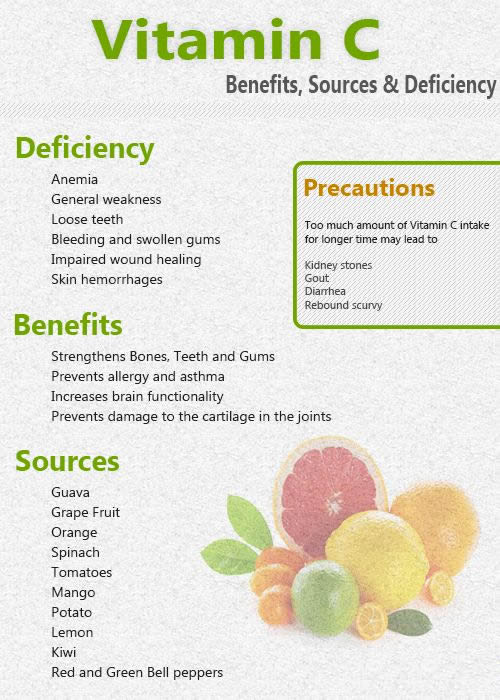 |
| Vitamin C Infographic |
Vitamin C supplements are another common source of the vitamin. Individuals at risk for vitamin C depletion such as smokers, women who take birth control pills
Common compounds include ascorbic acid, calcium ascorbate, sodium ascorbate, and C complex. The C complex compound contains a substance called bioflavonoids, which may enhance the benefits of vitamin C. Vitamin C is also available commercially as one ingredient of a multivitamin formula.
The recommended daily dosage of vitamin C varies by individual need, but an average daily dose might be 200 mg. Some healthcare providers recommend megadoses (up to 40 g) of vitamin C to combat infections.
However, the efficacy of these megadoses has not been proven, and in fact, some studies have shown that doses above 200 mg are not absorbed by the body and are instead excreted.
Precautions
Overdoses of vitamin C can cause nausea, diarrhea, stomach cramps, skin rashes
Because of an increased risk of kidney damage, persons with a history of kidney disease or kidney stones should never take dosages above 200 mg daily, and should consult with their healthcare provider before starting vitamin C supplementation.
A 1998 study linked overdoses (above 500 mg) of vitamin C to cell and DNA damage. However, other studies have contradicted these findings, and further research is needed to establish whether high doses of vitamin C can cause cell damage.
Side effects
Vitamin C can cause diarrhea and nausea. In some cases, side effects may be decreased or eliminated by adjusting the dosage of vitamin C.
Interactions
Vitamin C increases iron absorption, and is frequently prescribed with or added to commercial iron supplements for this reason.
Individuals taking anticoagulant, or blood thinning, medications should speak with their doctor before taking vitamin C supplements, as large doses of vitamin C may impact their efficacy.
Large amounts of vitamin C may increase estrogen levels in women taking hormone supplements or birth control medications, especially if both the supplement and the medication are taken simultaneously. Women should speak with their doctor before taking vitamin C if they are taking estrogen-containing medications.
Estrogen actually decreases absorption of vitamin C, so larger doses of vitamin C may be necessary. A healthcare provider can recommend proper dosages and the correct administration of medication and supplement.
Persons who take aspirin, antibiotics, and/or steroids should consult with their healthcare provider about adequate dosages of vitamin C. These medications can increase the need for higher vitamin C doses.
Large dosages of vitamin C can cause a false-positive result in tests for diabetes.

